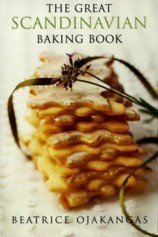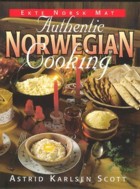|
Scandinavian BakingScandinavian Baking - honed to a fine art - for the holidays and throughout the yearEven if the Scandinavians did not enjoy a well-deserved reputation as good all-around cooks, they would still be entitled to culinary fame as bakers. Why this should be so has to do not only with the ingredients used and skills acquired in making baked goods over the centuries, but-through an interesting quirk - with coffee. Coffee is the beverage of Scandinavia, consumed morning, noon and night, after meals and in between as well. The Icelanders claim that they drink more of it than any other people in the world, and the Swedes rank themselves second, trailed by the Danes. Now coffee is never so good as when something really good is eaten with it. A great many of the baked goods that distinguish baking in this northern corner or the world seem actually to have been designed with coffee in mind. Few are of the delicate, tea-time type: they are mouthfuls rather than morsels. And they are rich not in a cloying way, but in a way that tempts by making "just one more" seem possible. Scandinavian Baking - with Butter! It's all made with butter, and lots of it. Some things are cream-filled or cream-covered. Their flavors are low-key-gentle dustings of cinnamon and cardamom-and common to many is the taste of nuts-and one nut in particular, the almond.
And when pounded to a paste, almonds take on a variety of other uses such as marzipan, whose bittersweet taste is one of the most pervasive flavors in baking in Scandinavia. A little marzipan may be insinuated into Danish pastry, or quantities of it rolled out thinly and wrapped around cake as a kind of icing. Blended with jam, marzipan is used as a cookie filling; mixed with flour, as a cookie itself. Molded into little pigs and other forms, it is eaten as a sweet or employed as a decoration. And come Shrove Tuesday in Sweden, it is eased into a hollowed-out bun filled with whipped cream.
|


